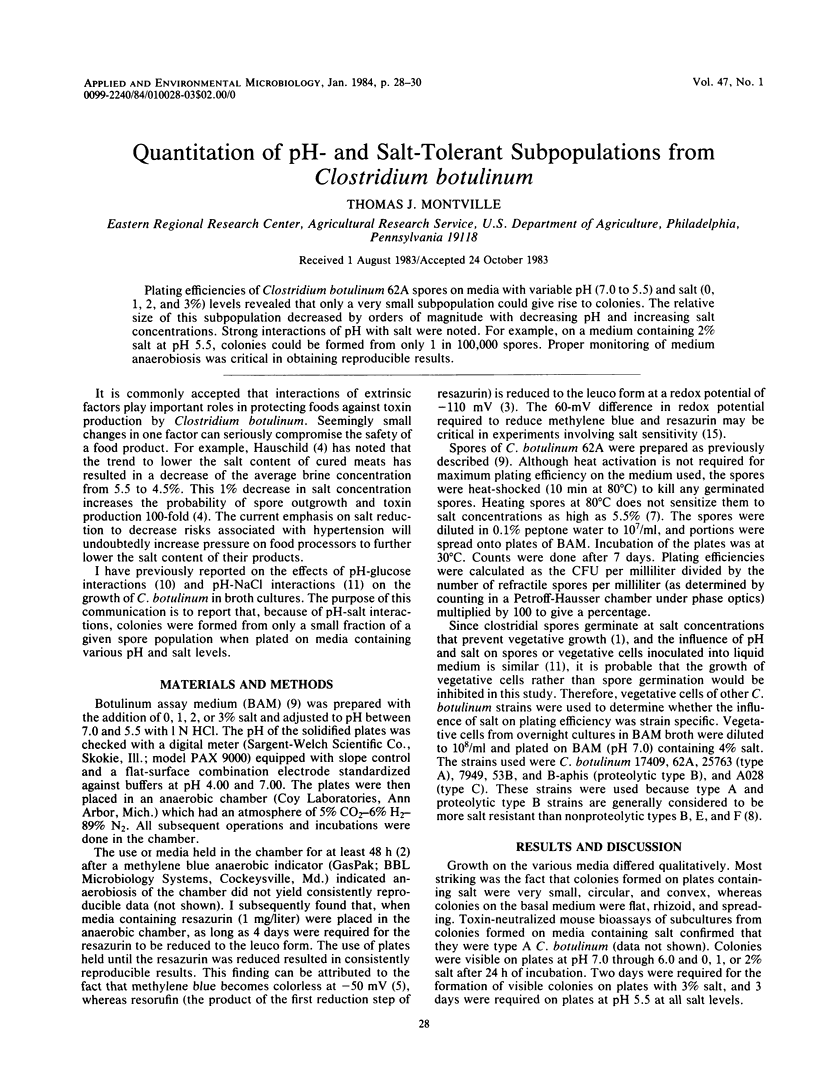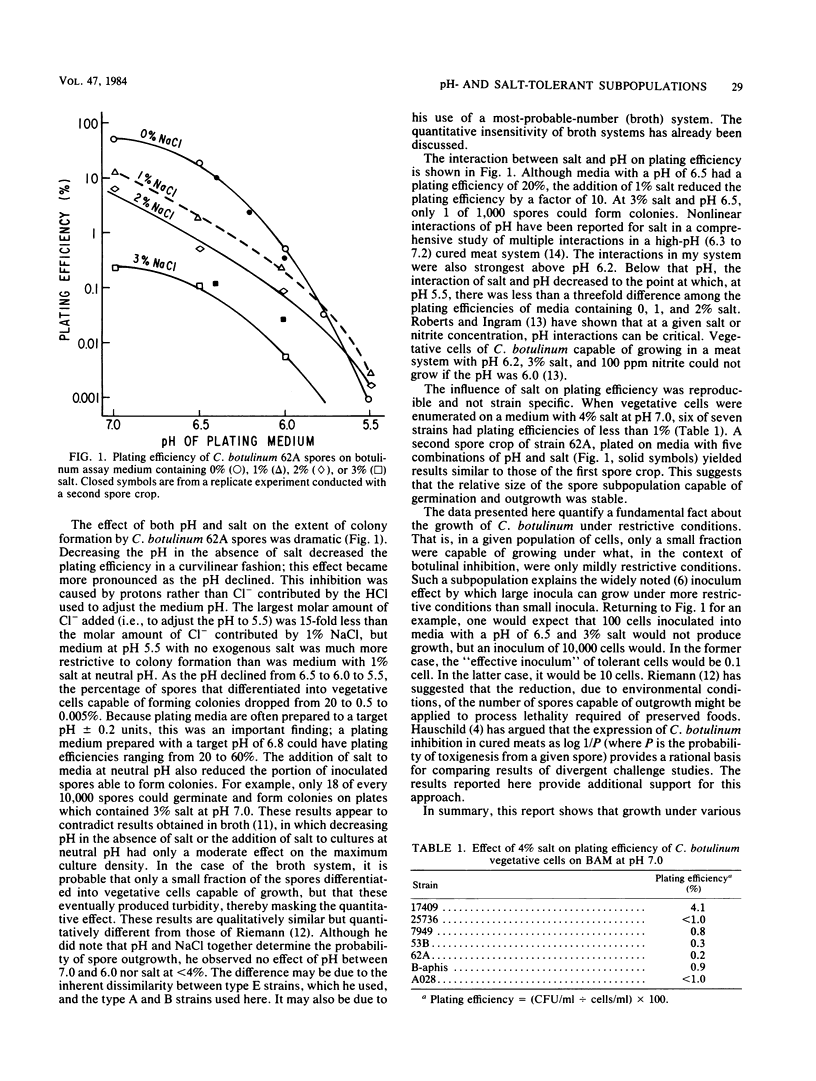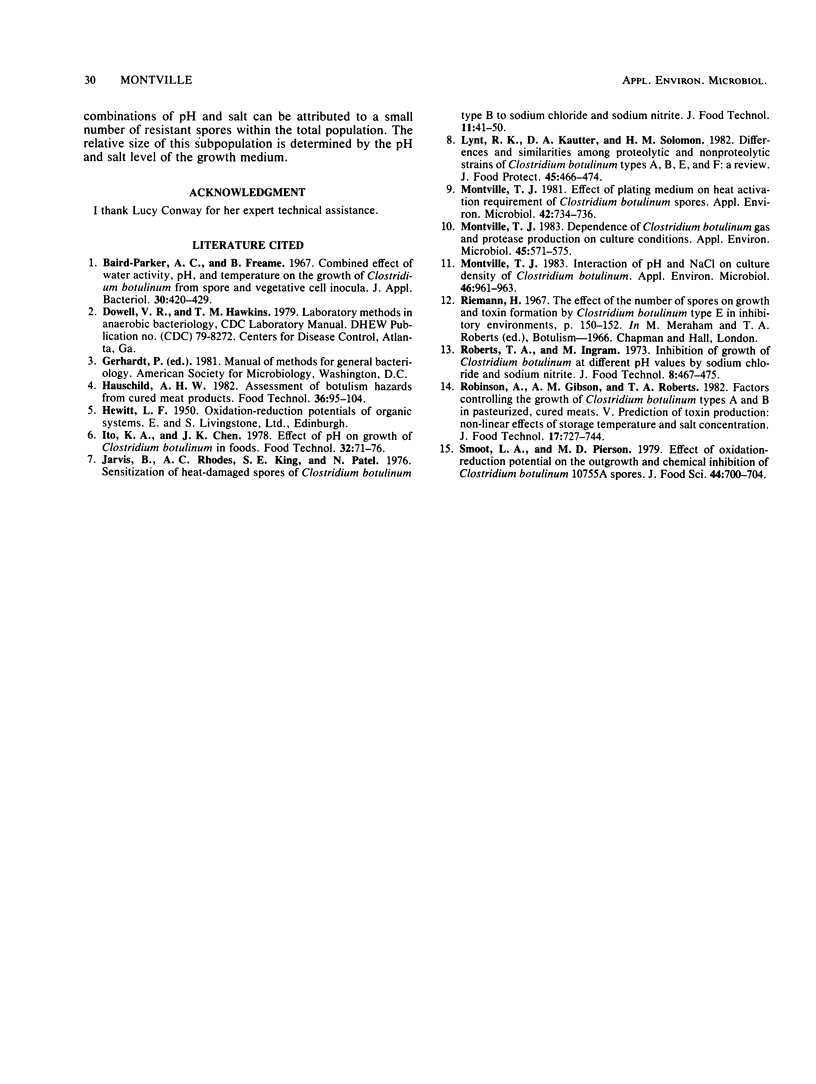Abstract
Plating efficiencies of Clostridium botulinum 62A spores on media with variable pH (7.0 to 5.5) and salt (0, 1, 2, and 3%) levels revealed that only a very small subpopulation could give rise to colonies. The relative size of this subpopulation decreased by orders of magnitude with decreasing pH and increasing salt concentrations. Strong interactions of pH with salt were noted. For example, on a medium containing 2% salt at pH 5.5, colonies could be formed from only 1 in 100,000 spores. Proper monitoring of medium anaerobiosis was critical in obtaining reproducible results.
Full text
PDF


Selected References
These references are in PubMed. This may not be the complete list of references from this article.
- Baird-Parker A. C., Freame B. Combined effect of water activity, pH and temperature on the growth of Clostridium botulinum from spore and vegetative cell inocula. J Appl Bacteriol. 1967 Dec;30(3):420–429. doi: 10.1111/j.1365-2672.1967.tb00320.x. [DOI] [PubMed] [Google Scholar]
- Montville T. J. Dependence of Clostridium botulinum gas and protease production on culture conditions. Appl Environ Microbiol. 1983 Feb;45(2):571–575. doi: 10.1128/aem.45.2.571-575.1983. [DOI] [PMC free article] [PubMed] [Google Scholar]
- Montville T. J. Effect of plating medium on heat activation requirement of Clostridium botulinum spores. Appl Environ Microbiol. 1981 Oct;42(4):734–736. doi: 10.1128/aem.42.4.734-736.1981. [DOI] [PMC free article] [PubMed] [Google Scholar]
- Montville T. J. Interaction of pH and NaCl on culture density of Clostridium botulinum 62A. Appl Environ Microbiol. 1983 Oct;46(4):961–963. doi: 10.1128/aem.46.4.961-963.1983. [DOI] [PMC free article] [PubMed] [Google Scholar]


